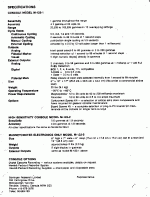O
oldfart
Guest
I was able to buy an apparently working mag off Ebay, I say apparently because ther was no "fish+cable" with it, however it powers up and produces random results with tuning etc so now I urgently need to hear from anyone with experience of these or with info on where to obtain a circuit diagram or manual
The M123 has been extensively used on arctic geophysical survey vessels and so should be quite sophisticated design, what I want to be able to do is find a pair of ships documented as lost around 1620 in my area of the Caribbean (not treasure ships but would probably have bronze cannon that local museum would like)
About 40 yrs ago I got the experimental proton mag from Planet and had to make a fish for that , remember the bottle was distilled water about 3 in diam but have forgotten wire guage and number of turns.
Any info or guidance would be most welcome.
The M123 has been extensively used on arctic geophysical survey vessels and so should be quite sophisticated design, what I want to be able to do is find a pair of ships documented as lost around 1620 in my area of the Caribbean (not treasure ships but would probably have bronze cannon that local museum would like)
About 40 yrs ago I got the experimental proton mag from Planet and had to make a fish for that , remember the bottle was distilled water about 3 in diam but have forgotten wire guage and number of turns.
Any info or guidance would be most welcome.







